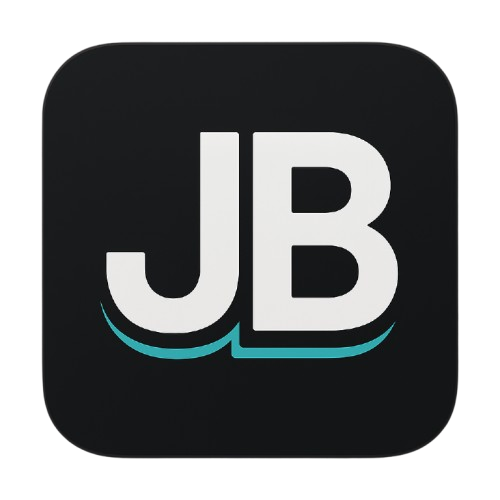How to Fix Neon PostgreSQL Endpoint ID Error in Laravel Complete step-by-step guide
Solve the notorious Neon PostgreSQL endpoint ID error in Laravel applications. Learn the official workaround using DATABASE_URL with embedded endpoint IDs.
How to Fix Neon PostgreSQL Endpoint ID Error in Laravel: A Complete Step-by-Step Guide
If you're trying to use Neon PostgreSQL with Laravel, you've probably encountered the dreaded endpoint ID error. This guide will walk you through the entire process from creating a new Laravel project to successfully connecting with Neon PostgreSQL.
The Problem
When connecting Laravel to Neon PostgreSQL, you'll likely encounter this error:
PDOException SQLSTATE[08006] [7] ERROR: Endpoint ID is not specified.
Either please upgrade the postgres client library (libpq) for SNI support
or pass the endpoint ID (first part of the domain name) as a parameter:
'?options=endpoint%3D<endpoint-id>'.
See more at https://neon.tech/sni
ERROR: connection is insecure (try using `sslmode=require`).
Prerequisites
- PHP 8.1 or higher
- Composer installed
- Laravel installer (
composer global require laravel/installer) - A Neon PostgreSQL account
Step 1: Create a New Laravel Project
First, let's create a fresh Laravel project:
laravel new neon-blog-demo
cd neon-blog-demoAlternatively, you can use Composer:
composer create-project laravel/laravel neon-blog-demo
cd neon-blog-demoStep 2: Set Up Neon PostgreSQL Database
- Sign up/Login to Neon: Go to neon.tech and create an account
- Create a new project: Click "Create Project"
- Get your connection details: After creation, go to your project dashboard and copy the connection string
Your Neon connection details will look something like this:
PGHOST='ep-bitter-unit-agyg01bt-pooler.c-2.eu-central-1.aws.neon.tech'
PGDATABASE='neondb'
PGUSER='neondb_owner'
PGPASSWORD='ppg_qODmkItxK8Z5'
PGSSLMODE='require'
PGCHANNELBINDING='require'
Step 3: Configure Laravel Environment (The Wrong Way First)
Let's start by configuring Laravel the "normal" way to see the error in action.
Update your .env file with individual database variables:
DB_CONNECTION=pgsql
DB_HOST=ep-bitter-unit-a1b2c3d4-pooler.us-east-1.aws.neon.tech
DB_PORT=5432
DB_DATABASE=neondb
DB_USERNAME=neondb_owner
DB_PASSWORD=your_password_here
DB_SSLMODE=requireOR you could actually use Database Url Instead of indivdual parameters, and you comment all individual variables
# DATABASE_URL ="postgresql://neondb_owner:ppg_qODmkItxK8Z5@ep-bitter-unit-agyg01bt-pooler.c-2.eu-central-1.aws.neon.tech/neondb?sslmode=require&channel_binding=require"Step 4: Reproduce the Error
Now let's try to run migrations to see the error:
# Clear config cache
php artisan config:clear
# Test connection (optional)
php artisan tinker
# > DB::connection()->getPdo();
# > exit
# Run migrations
php artisan migrate
# Seed database (if needed)
php artisan db:seed💥 BOOM! You'll see the endpoint ID error:
SQLSTATE[08006] [7] ERROR: Endpoint ID is not specified. Either please upgrade the postgres client library (libpq) for SNI support or pass the endpoint ID (first part of the domain name) as a parameter: '?options=endpoint%3D<endpoint-id>'. See more at https://neon.tech/sni
ERROR: connection is insecure (try using `sslmode=require`).
You can also test the connection directly:
php artisan tinkerThen in Tinker:
DB::connection()->getPdo();
// This will throw the same error
exitStep 5: Understanding the Problem
The issue occurs because:
- Neon uses Server Name Indication (SNI) for SSL connections
- Older PostgreSQL client libraries don't support SNI properly
- Laravel's default database configuration doesn't handle Neon's endpoint ID requirement
- The endpoint ID (first part of the hostname) needs to be passed explicitly
Step 6: The Solution - Using DATABASE_URL with Endpoint ID
The official Neon workaround is to embed the endpoint ID directly in the password field of the connection string.
Extract Your Endpoint ID
From your host: ep-bitter-unit-a1b2c3d4-pooler.us-east-1.aws.neon.tech
Your endpoint ID is: ep-bitter-unit-a1b2c3d4
Update Your .env File
Remove or comment out all the individual DB_* variables:
# Comment out these individual settings
# DB_CONNECTION=pgsql
# DB_HOST=ep-bitter-unit-a1b2c3d4-pooler.us-east-1.aws.neon.tech
# DB_PORT=5432
# DB_DATABASE=neondb
# DB_USERNAME=neondb_owner
# DB_PASSWORD=your_password_here
# DB_SSLMODE=requireAdd the DATABASE_URL instead:
DATABASE_URL="postgresql://neondb_owner:endpoint=ep-bitter-unit-a1b2c3d4;your_password_here@ep-bitter-unit-a1b2c3d4-pooler.us-east-1.aws.neon.tech:5432/neondb?sslmode=require&pgbouncer=true&connect_timeout=10"OR you could also still use the individual parameters
# DB_CONNECTION=pgsql
# DB_HOST=ep-bitter-unit-agyg01bt-pooler.c-2.eu-central-1.aws.neon.tech
# DB_PORT=5432
# DB_DATABASE=neondb
# DB_USERNAME=neondb_owner
# DB_PASSWORD='endpoint=ep-bitter-unit-agyg01bt;ppg_qODmkItxK8Z5'
Breaking Down the Solution
The magic happens in the password field:
endpoint=<endpoint_id>;<actual_password>
So if your:
- Endpoint ID is:
ep-bitter-unit-a1b2c3d4 - Password is:
your_password_here
The password field becomes: endpoint=ep-bitter-unit-a1b2c3d4;your_password_here
Step 7: Test the Fix
Now let's test our solution:
# Clear the config cache
php artisan config:clear
# Test the database connection
php artisan tinkerIn Tinker:
DB::connection()->getPdo();
// Should return: PDO {#hash internalEncoding: "UTF8"}
exitStep 8: Run Migrations Successfully
Now we can run our migrations without errors:
php artisan migrateYou should see:
INFO Running migrations.
2014_10_12_000000_create_users_table ........................ PENDING
2014_10_12_000000_create_users_table ........................ DONE
2014_10_12_100000_create_password_reset_tokens_table ........ PENDING
2014_10_12_100000_create_password_reset_tokens_table ........ DONE
2019_08_19_000000_create_failed_jobs_table .................. PENDING
2019_08_19_000000_create_failed_jobs_table .................. DONE
2019_12_14_000001_create_personal_access_tokens_table ....... PENDING
2019_12_14_000001_create_personal_access_tokens_table ....... DONE
Step 9: Create a Simple Test
Let's create a simple test to verify everything works. Create a new model and migration:
php artisan make:model Post -mEdit the migration file (database/migrations/xxxx_create_posts_table.php):
<?php
use Illuminate\Database\Migrations\Migration;
use Illuminate\Database\Schema\Blueprint;
use Illuminate\Support\Facades\Schema;
return new class extends Migration
{
public function up(): void
{
Schema::create('posts', function (Blueprint $table) {
$table->id();
$table->string('title');
$table->text('content');
$table->timestamps();
});
}
public function down(): void
{
Schema::dropIfExists('posts');
}
};Run the migration:
php artisan migrateStep 10: Test with Tinker
Let's create and retrieve some data:
php artisan tinker// Create a post
$post = new App\Models\Post();
$post->title = "My First Neon Post";
$post->content = "This post was created using Laravel with Neon PostgreSQL!";
$post->save();
// Retrieve all posts
App\Models\Post::all();
// Exit tinker
exitWhy This Solution Works
- Endpoint ID Embedding: By putting
endpoint=<endpoint_id>;before the password, we're telling Neon exactly which database instance to connect to - SSL Requirement: The
sslmode=requireparameter ensures secure connections - Connection Pooling:
pgbouncer=trueenables connection pooling for better performance - Timeout Protection:
connect_timeout=10prevents hanging connections
Alternative Solutions (That Don't Work Well)
❌ Using options parameter in URL
DATABASE_URL="postgresql://user:pass@host/db?options=endpoint%3Dendpoint_id"This doesn't work reliably with Laravel's PDO connection.
❌ Modifying config/database.php
While you can modify the database config file, the DATABASE_URL approach is cleaner and more portable.
Best Practices
- Always use DATABASE_URL for Neon connections in Laravel
- Include connection pooling (
pgbouncer=true) for production - Set reasonable timeouts to prevent hanging connections
- Keep your credentials secure - never commit them to version control
- Use environment-specific .env files for different stages
Troubleshooting Common Issues
Issue: "Connection refused"
Solution: Check if your Neon project is active and the host URL is correct.
Issue: "SSL connection required"
Solution: Ensure sslmode=require is in your DATABASE_URL.
Issue: "Authentication failed"
Solution: Verify your username and password are correct in the DATABASE_URL.
Issue: "Database doesn't exist"
Solution: Check the database name in your Neon dashboard.
Production Considerations
For production applications:
- Use connection pooling: Always include
pgbouncer=true - Monitor connection limits: Neon has connection limits on free tier
- Consider read replicas: For read-heavy applications
- Set up monitoring: Monitor database performance and connection usage
- Backup strategy: Neon provides automated backups, but consider your needs
Conclusion
The Neon PostgreSQL endpoint ID issue is a common stumbling block when setting up Laravel applications. By using the DATABASE_URL approach with the endpoint ID embedded in the password field, you can quickly resolve this issue and get your Laravel application connected to Neon's excellent PostgreSQL service.
The key takeaway is that Neon requires the endpoint ID to properly route connections, and embedding it in the password field with a semicolon separator is the most reliable way to achieve this in Laravel.
Now you can enjoy the benefits of Neon's serverless PostgreSQL with your Laravel applications - including automatic scaling, branching, and excellent developer experience!
Resources
Happy coding! 🚀

